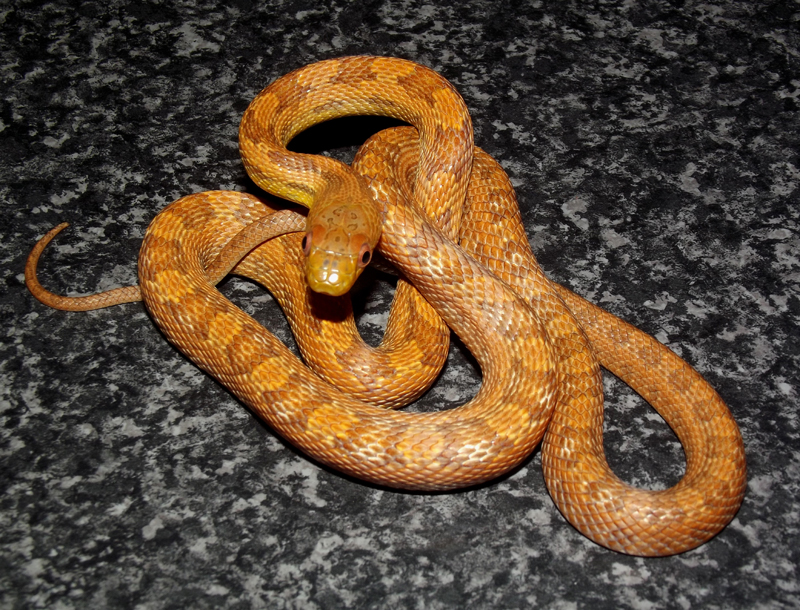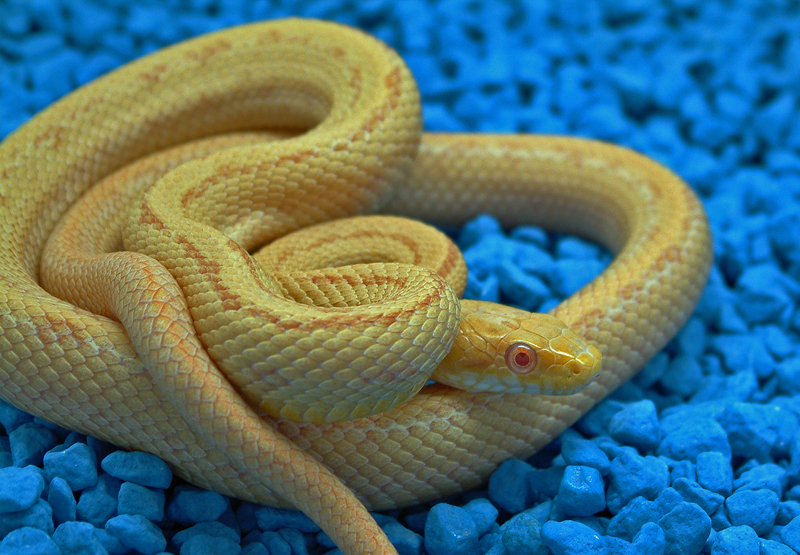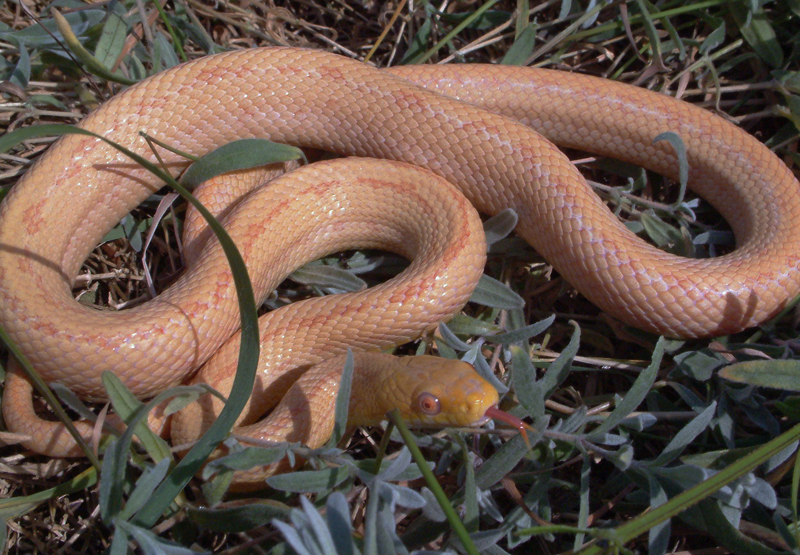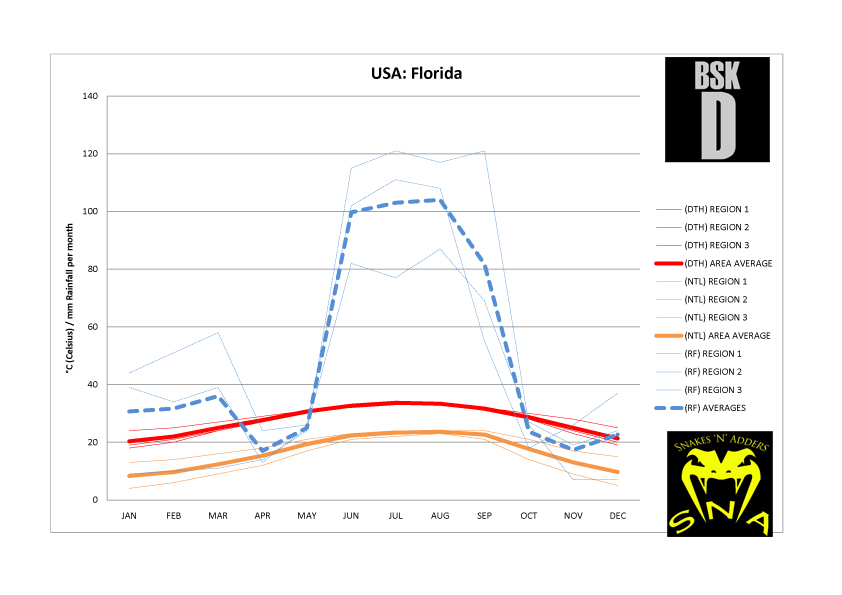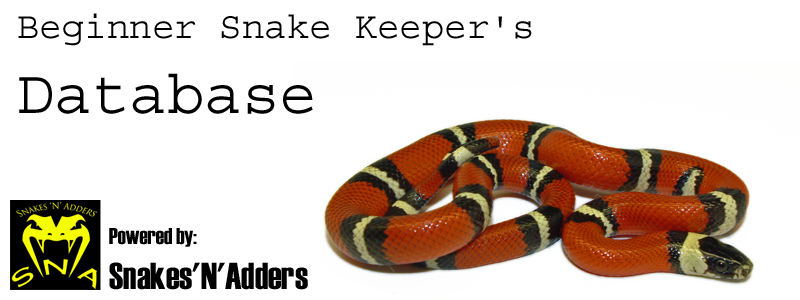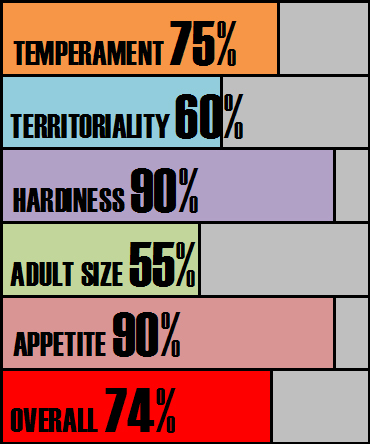

Species Notes based on experiences:
This species has now been rolled into the Eastern Rat Snake (Pantherophis alleghaniensis) which encapsulates the Eastern range of the Black Rat Snake to the North. The Yellow Rat Snake (Pantherophis obsoletus quadrivittatus) and the Everglades Rat Snake (Pantherophis obsoletus rossalini). This seems counter intuitive to what goes on and is still recognised and worked with within the hobby. So I will deal with the American Rat Snakes as they were. Everglades Rat Snakes were always the most popular of the ‘obsoletus’ group. Good examples were a stunning rich uniform orange with yellow ventral scales and four red/brown stripes running down the back. Importantly ‘pure’ Everglades were known to have red tongues as opposed to the Black Tongues of their neighbour the Yellow Rat Snake. This was a more slightly built snake than the Yellow Rat Snake with adults appearing far more elegant in build. They were also known as the most manageable of the ‘obsoletus’ Rat Snakes as they were shorter than the other subspecies as well rarely passing 2 metres in length. As with all the ‘obsoletus’ snakes this subspecies is born saddled and with an overall grey wash to the colours. With subsequent shed skins the intensity of the oranges begins to build. Over time the edges of the saddles begin to stretch to meet the saddle in front and behind. The centre of the saddles begins to fade. Eventually fully mature animals will appeared striped with two dorsal stripes and two flank stripes. Searching for ‘pure’ Everglades can be folly. They have been hybridised relentlessly with other members of the clan. Hybrids invariably have black tongues denoting a mixing of the subspecies. Science does not recognise this information and has now placed them together which may make sense from a DNA perspective but ruins trying to keep lines separate.
Score analysis:
Temperament of Everglades Rat Snake for the most part is very good. This is a patient snake and makes a good species to handle. Babies occasionally may be defensive and rattle their tail through fright. IF particularly threatened they may raise the front of their body into a series of S’s. This is not a snake that is quick to bite however and would much rather wriggle and try to escape your grip. These behaviours are fleeting and animals will usually calm down well.
Territory disputes are more likely to occur than temperament issues. Regardless of how long you have had your Rat Snake they never seem fond of being disturbed and can be quite grumpy about it. This may involve darting to the other end of the enclosure or rattling their tail loudly in the substrate. Whilst this isn’t really a hissing snake they make their displeasure known by raising the front 1/3 of their body into a series of ‘S’s. The head may also be flattened. This is nearly always bluff. Once removed from the enclosure many of these behaviours will abate almost immediately.
Everglades Rat Snakes have proven in captivity to be as tough as its ‘obsoletus’ cousins. It has been imported in both captive bred and wild caught form for almost 40 years. Over this time it has not been known as a delicate or even needy snake. The region of natural occurrence may well be cosseted compared to other members of the family but this is not reflected in captive care. A superb pet species.
Mature Everglades Rat Snakes are usually from 5-6ft in length. Exception animals may well exceed this. This is a lean and athletic looking snake. Some of the family can look like bruisers when adult but Everglades Rat Snakes seem to retain an almost feminine build. It is an active snake that likes to climb and investigate its enclosure. Provision of climbing apparatus would be recommended. This is a strong snake however and will feel more powerful than a Corn Snake of the same length. We would have no issues if younger keepers wanted to try their hand with this species. It would be a case of meeting the snake first and ensuring that they were a good match.
All North American Rat Snakes have a superb appetite. They will accept a range of prey items and grow rapidly. Care must be taken not to create obese animals as they are also willing to feed too well. Of all the things that could go wrong with a pet snake. A rat Snake and its love of food will not be one of them.
Enclosure recommendations:
Tub:
This species is not suitable for keeping in a tub long term
Vivarium:
120cm x 60cm x 60cm
Budget rig: -
60cm x 30cm heat pad
On / off thermostat
Digital thermometer to monitor thermostat performance
Warm hide
Cool hide
Water bowl
substrate
Recommended rig (vivarium only): -
250w ceramic heat emitter
Ceramic lamp holder and bracket
Bulb guard
Day night thermostat
Digital thermometer to monitor thermostat performance
Various logs and caves along the thermal gradient
Damp hide (optional)
Climbing and exercise branches
Plants and foliage (live or artificial – your choice)
Water bowl
Substrate
UVB light (8w T5 shade dweller 7% kit from Arcadia or equivalent) (optional)
Subterranean section to vivarium for further psychological security (optional)
Climate analysis:
Climate data reflects a somewhat more clement regions than enjoyed by many of its cousins. A short period of reduced activity may be anticipated in winter. In certain regions activity may be able to continue year round. In the UK it would always be recommended to give a winter cool down with reduced photoperiod and temperatures down to around 15°c. Feeding should cease during this period. Breeding usually ensues with gusto when the animals reappear.
Conclusion:
A superb pet snake that has been kept for 40 years or more in captivity. They are great feeders, resilient and strong snakes that will tolerate the odd faux pas on the keeper’s side without falling ill. We would have no issue with younger keepers having an Everglades Rat Snake but care should be taken to have introductions prior to purchase so that compatibility is confirmed. This is not a snake I would recommend mail ordering as a first snake. There will still be defensive snakes as part of the captive bred populous.
